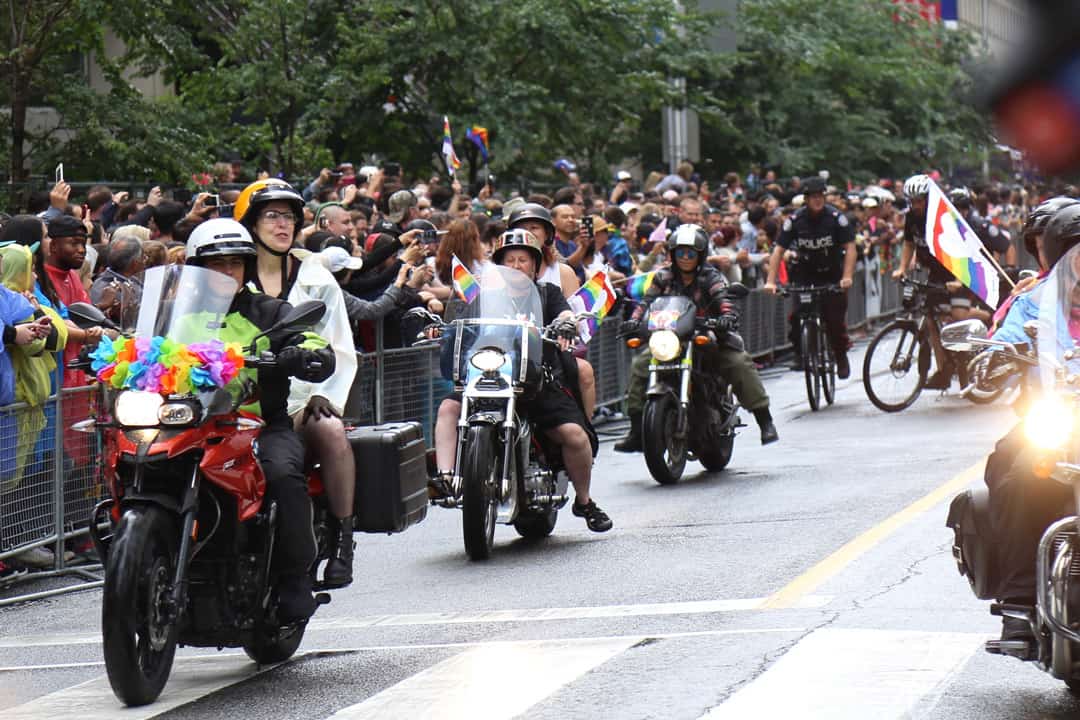Last month, Olivia Nuamah, executive director of Pride Toronto, announced that the Toronto Police Service (TPS) will march in the 2019 parade in uniform, following their absence in the last two parades.
In the 2016 parade, a Black Lives Matter protest successfully demanded that police floats be removed and officers not show up in uniform for future parades. Some view the upcoming re-entry of police as a step forward for the community’s relationship with the TPS.
But it has also drawn ire, particularly among marginalized members of the LGBTQ+ community, whose negative experiences with the TPS had made it difficult for them to attend the event in the past. They had been strongly supportive of the absence of the TPS.
One can understand the desire to portray a united front when trying to achieve reconciliation. The presence of the TPS at the Pride Parade might one day become a symbol of the triumph of community and love over injustice and persecution.
However, it is inappropriate to access this symbol until that triumph has actually been attained in an effective and permanent capacity. Many of the most vulnerable among us still feel as though their relationship with the police has a long way to go toward respect and repair.
A demonstration in opposition to police in uniform at Pride was held in front of Pride Toronto’s headquarters on November 3. Organized by Ashley Cooper, the Facebook event for the demonstration drew support from over 1,000 individuals.
The event was attended by leaders in the LGBTQ+ community, including Nick Mulé, an associate professor at York University and the Chair of Queer Ontario, sociologist and activist Gary Kinsman, one of Canada’s leading academics on LGBTQ+ issues, and Alphonso King Jr., also known as DJ Relentless and Jade Elektra.
Their speeches were impassioned, focused, and reflected a bitter frustration toward the executive directorship of Pride Toronto for what feels to many community members like a severe betrayal of Pride’s history of resistance.
It is important to recognize that the Pride festival exists to commemorate the progress made by activists against decades of violence abetted and often executed by governmental and law enforcement bodies.
Kinsman opened his address by introducing himself as one of the organizers of Toronto’s first Pride event held in June 1981.
“I want to remind people a little bit first of all about the history of that first Pride. 1981 was the year of the bath raids and the mass resistance on the part of our communities to the police invasions of our lives, the arrests, and all of the horror that occurred as a result of those raids.”
37 years ago, on February 5, 1981, the Metropolitan Toronto Police conducted a raid of four bathhouses, arresting 286 men and prompting outrage from Toronto’s gay and lesbian community and its public allies.
Toronto Pride Week grew out of the mass protests that ensued, which were organized against not only the raids, but also against the systemic discrimination of the queer community perpetrated by the city’s police force.
The insistence that the officers be allowed to march in uniform is accordingly troubling. The attempt to paint the social institution of policing as an ally in those achievements, as opposed to its historical role as aggressor and deterrer, is misleading.
“It’s right there at the top of their website: ‘To Serve and Protect.’ But to serve and protect who?” Cooper asked of those in attendance at the November 3 demonstration.
Recent interactions between the community and the police indicate that the relationship is far from healed.
In the fall of 2016, it was brought to the public’s attention that the police were engaging in an undercover operation titled Project Marie, in which police arrested 72 individuals after luring them into soliciting sex acts at Marie Curtis Park. The 89 charges laid were almost entirely bylaw infractions, a baffling choice considering that undercover operations are utilized primarily for cases of criminal activity.
This year, the arrest of Bruce McArthur for the first-degree murder of eight men between 2010 and 2017 dug a deeper schism between the community and the TPS. In December 2017, already months into an investigation, Chief Mark Saunders claimed that there was no evidence of a serial killer targeting the gay community.
Not only did the TPS publicly deny the connection of the disappearances to a serial murderer, but a statement released by Pride Toronto in April revealed that the community had earlier voiced their concern about the disappearances, only to be dismissed by the investigators.
At the demonstration, it was made clear that many feel that the decision to once again extend the invitation to police is primarily based on a threat to Pride of losing its government funding.
“‘It has come to threaten our very existence as a publicly funded non-profit community organization.’ That is a direct quote from their statement,” Cooper cited from Pride Toronto’s announcement.
To insist that the LGBTQ+ community be the first to extend their hands in friendship to the police, especially in invitation to an event that is such an emblem of rebellion against oppression, is neither fair nor reasonable when reciprocal efforts toward reconciliation have not yet been appropriately rendered.
“The people who wear the badge are welcome,” Cooper said. “It is the badge we have asked to stay at home.”
Anna Osterberg is a first-year Master of Teaching student at the Ontario Institute for Studies in Education.


